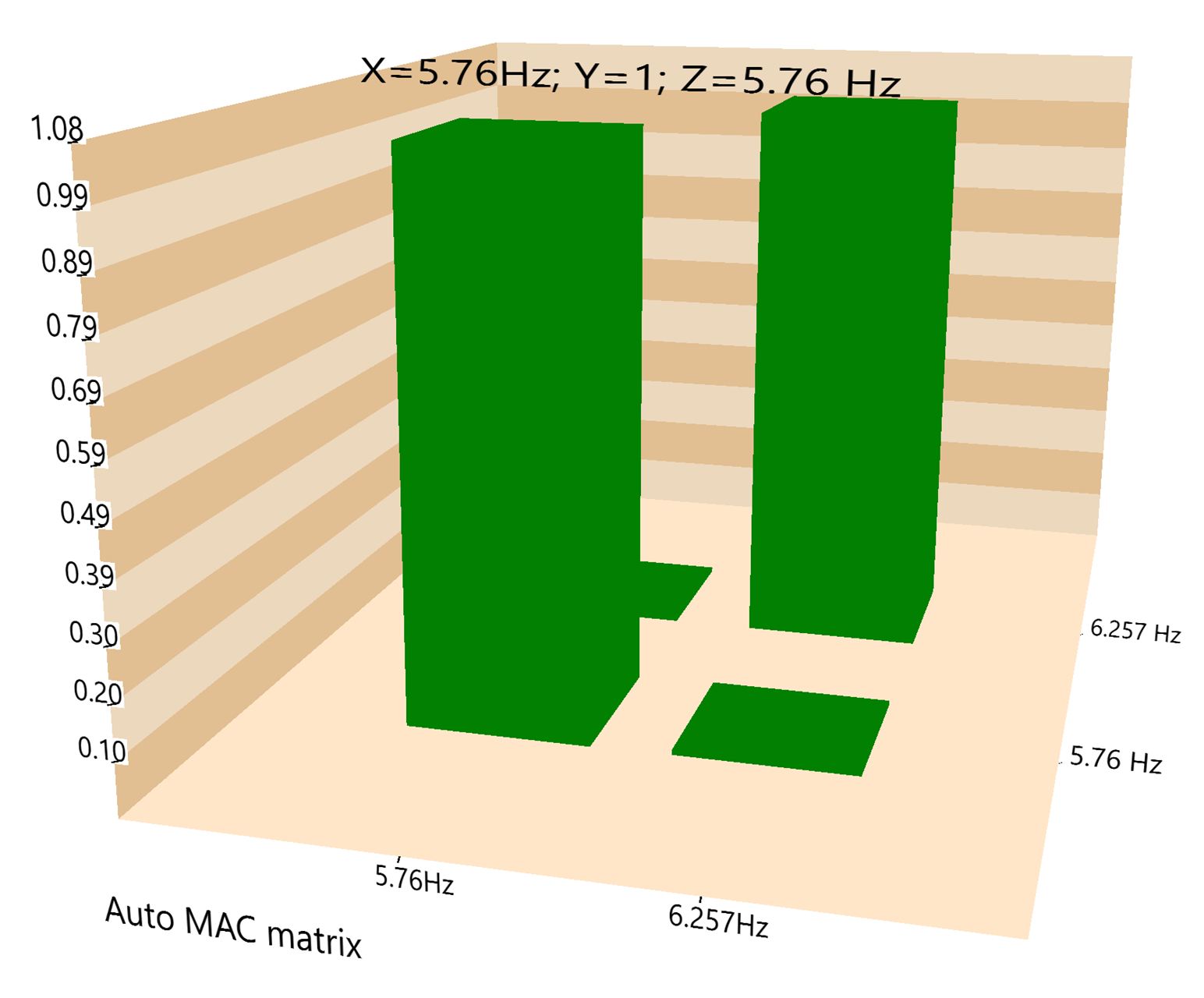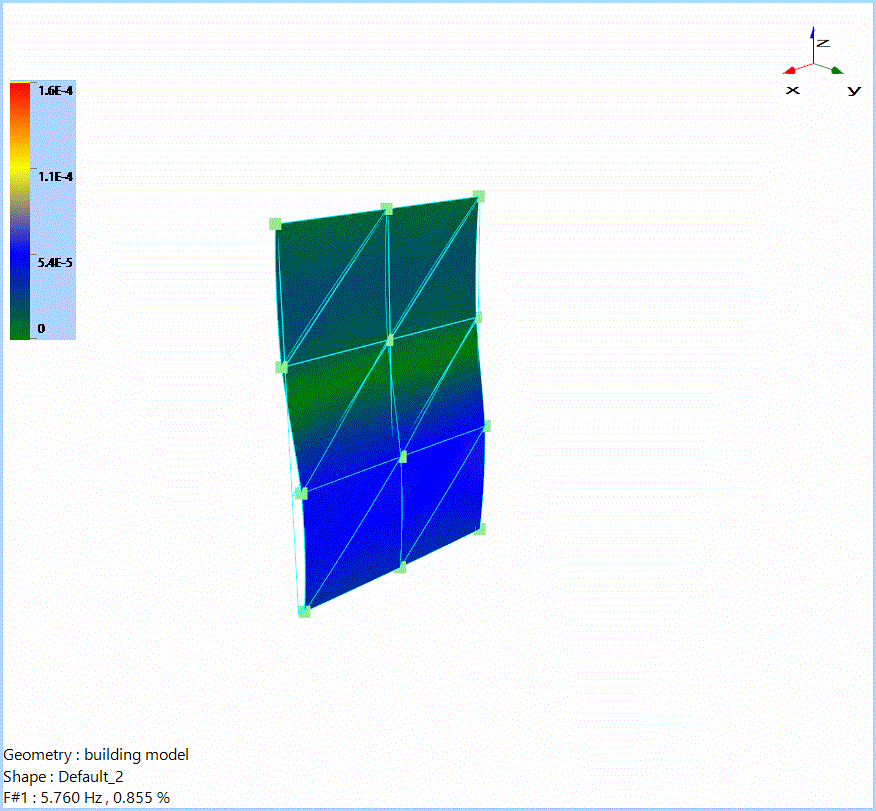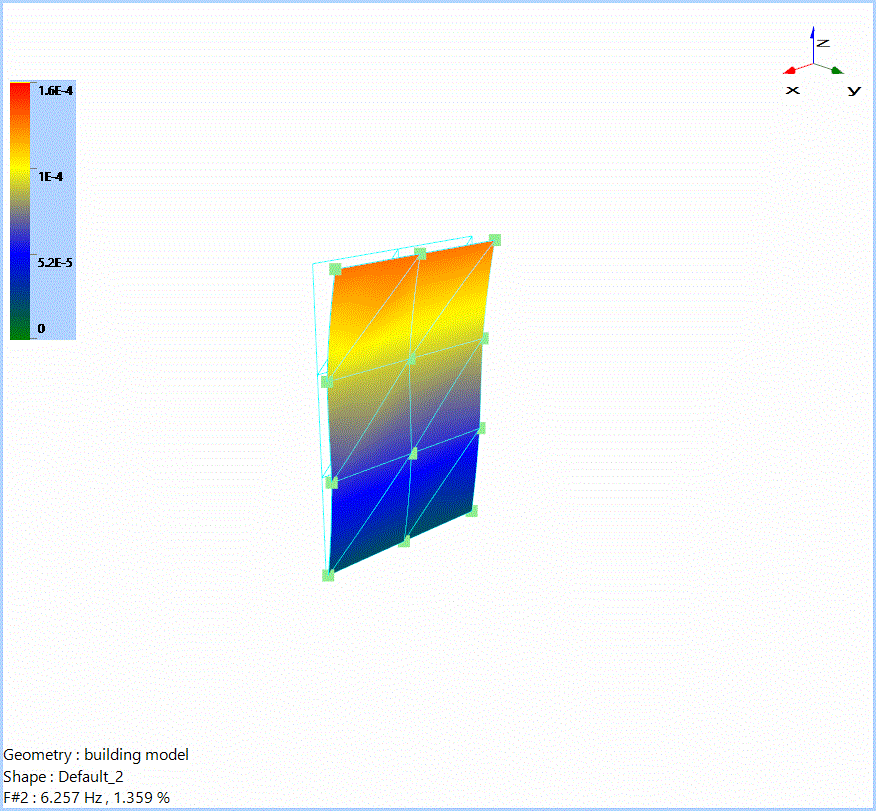Operational Modal Analysis of Scaled Building Structure using EDM Modal
Operational Modal Analysis (OMA) is commonly used to monitor and evaluate the health of building structures to investigate for any damage [1]. Studying the modal parameters of the structure can assist in observing changes in the dynamic properties which can further help in predicting error in certain elements which might need some repair or modification.
Figure 1. Reference Image of OMA Testing on Building
The procedure implemented to execute an OMA test on a building structure is discussed. Ambient excitation (for example, wind) is used in an OMA modal test which eliminates the need to induce excitation through modal shakers or a modal hammer. This is simpler because it is very hard to excite such large structures (e.g., buildings). It is also more economical and desirable because the complexity and cost of instrumentation is significantly reduced. Recording the responses of the structure through accelerometers attached at different locations spread throughout the building is sufficient to carry out an OMA test and to obtain the modal characteristics of the structure.
In this case, the modal characteristics of a scaled building model is acquired by performing operational modal analysis. Multiple sensors are used to record the vibration of the structure, along the X and Y directions. One of the locations, two sensors along the X and Y respectively are fixed at the reference point. While the other sensors are roved through the different measurement points.
To execute the test with maximum efficiency, a Spider-80X front-end is used to take advantage of all the 8 channels simultaneously. The latest 9.0 release of the EDM Modal software assists in executing the OMA test.
Figure 2. Scaled Building Model
A mesh configuration of 12 measurement points is placed throughout the building structure. Ambient excitation is used for the modal test in its in-situ environment. The responses to the ambient excitations are captured using 4 X/Y accelerometers (from the tri-axis sensor) that are roved throughout the structure. One of the tri-axials are fixed on the reference point, measuring along the X and Y directions; while other 3, measuring the response in the X and Y directions facilitates in obtaining the in-plane mode shapes.
Figure 3. Scaled Building Model Geometry
For this modal test, the lower order modes are of interest as they will have the highest displacement and therefore a sampling rate of 200 Hz is set. A block size of 2048 is selected. A fine frequency resolution of 0.097 Hz is produced with these configuration settings. Measurements of higher accuracy and reduced noise are obtained by linearly averaging 4 blocks of data at each measurement DOF. A Hanning window has been implemented to reduce the leakage. This information is graphically represented in the plots shown below.
Figure 4. OMA Measurement of the scaled building model
The Cross Power Spectrum (CPS) plot on the left is for the reference measurement point. It can be observed that the phase is zero for the reference signal in the X and Y direction. The CPS plot on the right shows good dominant peaks in the 0-10 Hz frequency band. Overlapping the CPS signals for all measurement DOFs helps to observe the magnitude and phase relation for all signals. The quick compatibility check validates that the configuration settings are the same for all the measurement DOFs.
Figure 5. Modal Data Selection tab showing the magnitude and phase relation for all overlapped CPS signals
The new SSI (Stochastic Subspace Identification) method is used to curve-fit the CPS’s to procure the following stability diagram. Two flexible modes are selected within the desired frequency range. Complex Mode Indicator Function (CMIF) is used to indicate the peaks at the natural frequencies.
Figure 6. Stability Diagram for the scaled building model
The Auto-MAC matrix helps in validating the results. The Auto-MAC matrix below shows that the modes are orthogonal to each other (low off-diagonal elements) and are uniquely identified (high diagonal elements).
Figure 7. Auto MAC chart for the OMA test
The animation shapes of the flexible body modes associated with the stable physical poles are shown below.
Figure 8. Mode Shapes of the scaled building model obtained through OMA test in EDM Modal
The results show the strength of the Spider-80X hardware and the efficiency of the EDM Modal software to execute sophisticated in-situ modal tests on different structures.
To learn more about EDM Modal software, visit: www.crystalinstruments.com/edm-modal-testing-and-analysis-software/
References
[1] Fernandez Lorenzo, Guillermo & Mercerat, E. & Santisi d'Avila, Maria Paola & Bertrand, Etienne & Deschamps, Anne. (2015). Operational Modal Analysis of a high rise RC building and modelling. 6th International Operational Modal Analysis Conference, IOMAC 2015









